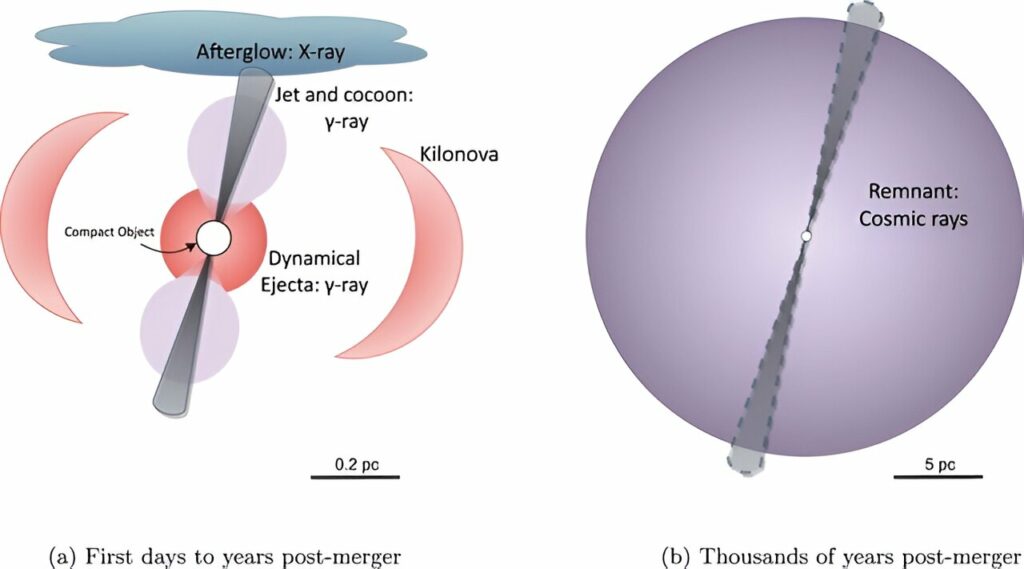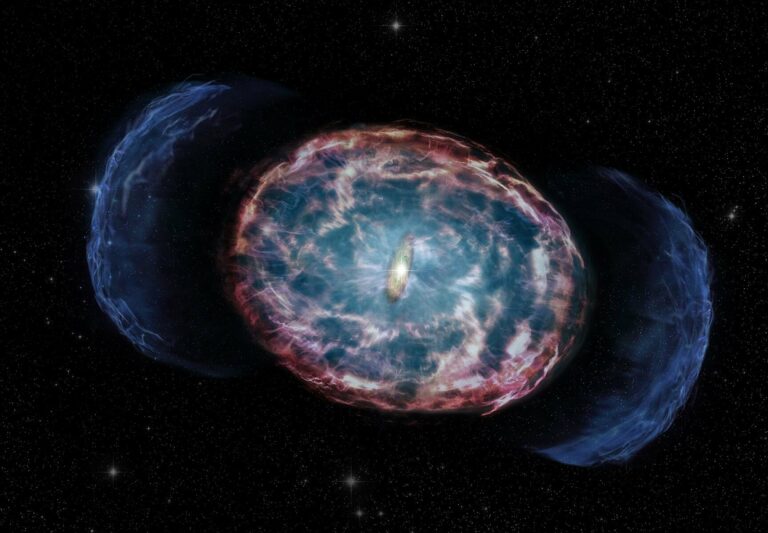What level of threat do kilonovae pose?
When gazing up at the night sky on a particularly dark evening, a feeling of timelessness envelops us. Occasionally, we may witness the fleeting brilliance of a shooting star or even catch a glimpse of a comet with our naked eyes. Yet, amidst the cold and distant stars, there exists an unchanging sense of tranquility. Despite the uncertainties that plague our world, we find solace in the unwavering watchfulness of the stars.
It is difficult to fathom that light years away, a lurking event could potentially pose an existential danger to humanity. Although this threat may be infinitesimally small, it is not entirely nonexistent. Recently, a paper published in The Astrophysical Journal has shed light on this subject.
The focus of this study revolves around kilonovae, which can occur when two neutron stars collide or when a neutron star collides with a stellar-mass black hole. Kilonovae share similarities with supernovae, but their intensity surpasses that of the latter. Within the paper, the authors delve into a specific kilonova known as GW170817. This particular event was detected by the LIGO and Virgo gravitational wave observatories in 2017, and it manifested as a gamma-ray burst, observed by the Fermi and INTEGRAL space telescopes. With both optical and gravitational observations at their disposal, the researchers were able to accurately calculate the energy of the kilonova.
Utilizing this data, the team embarked on computer simulations to further explore kilonovae. Their objective was to estimate the minimum safe distance from which a kilonova could occur without posing a threat. In essence, they sought to determine how close such an event could transpire while remaining a harmless spectacle. Their findings revealed the existence of multiple safe distances, contingent upon the specific aspect of the supernova that presents a potential danger
The X-ray afterglow presents a potential danger. When neutron stars collide, a powerful burst of gamma rays can emerge from their shared polar region. These gamma ray jets interact with interstellar gas, resulting in a lingering afterglow of intense X-rays. The strength of this afterglow has the potential to ionize Earth’s atmosphere, leaving us vulnerable to solar flares and ultraviolet radiation. However, this risk only exists if the kilonova event occurs within approximately 16 light-years of our planet. The gamma rays themselves could also pose a similar threat, but only within a range of about 13 light-years.

Nevertheless, the team’s findings indicate that the more significant danger would not reach us at the speed of light. Following the explosion, a shockwave generated by the collision would gradually expand away from the kilonova over the course of roughly a thousand years. When this shockwave encounters interstellar gas and dust, it generates highly energetic cosmic rays. If a stream of these cosmic rays were to reach us, it could potentially vaporize our atmosphere, resulting in the extinction of most life on Earth. However, this peril would only be a concern within a distance of approximately 40 light-years.
GW170817, the specific kilonova event mentioned, occurred approximately 130 million light-years away, meaning it poses absolutely no threat to us. Even if a similar event were to transpire in our stellar vicinity, it would likely be too far away to cause any harm. As far as our current knowledge goes, there are no binary neutron stars within a 40 light-year radius that are expected to merge in the near future.
Therefore, there is no need for us to be concerned. The main takeaway from this study is that while kilonovae can occasionally pose a threat to life throughout the universe, this danger is not significant enough to eradicate a substantial portion of inhabited worlds. While we must remain vigilant against cosmic hazards, fortunately, a kilonova is not one of them.
This article is republished from PhysORG under a Creative Commons license. Read the original article.
Do not forget to share your opinion with us to provide you with the best posts !




0 Comments